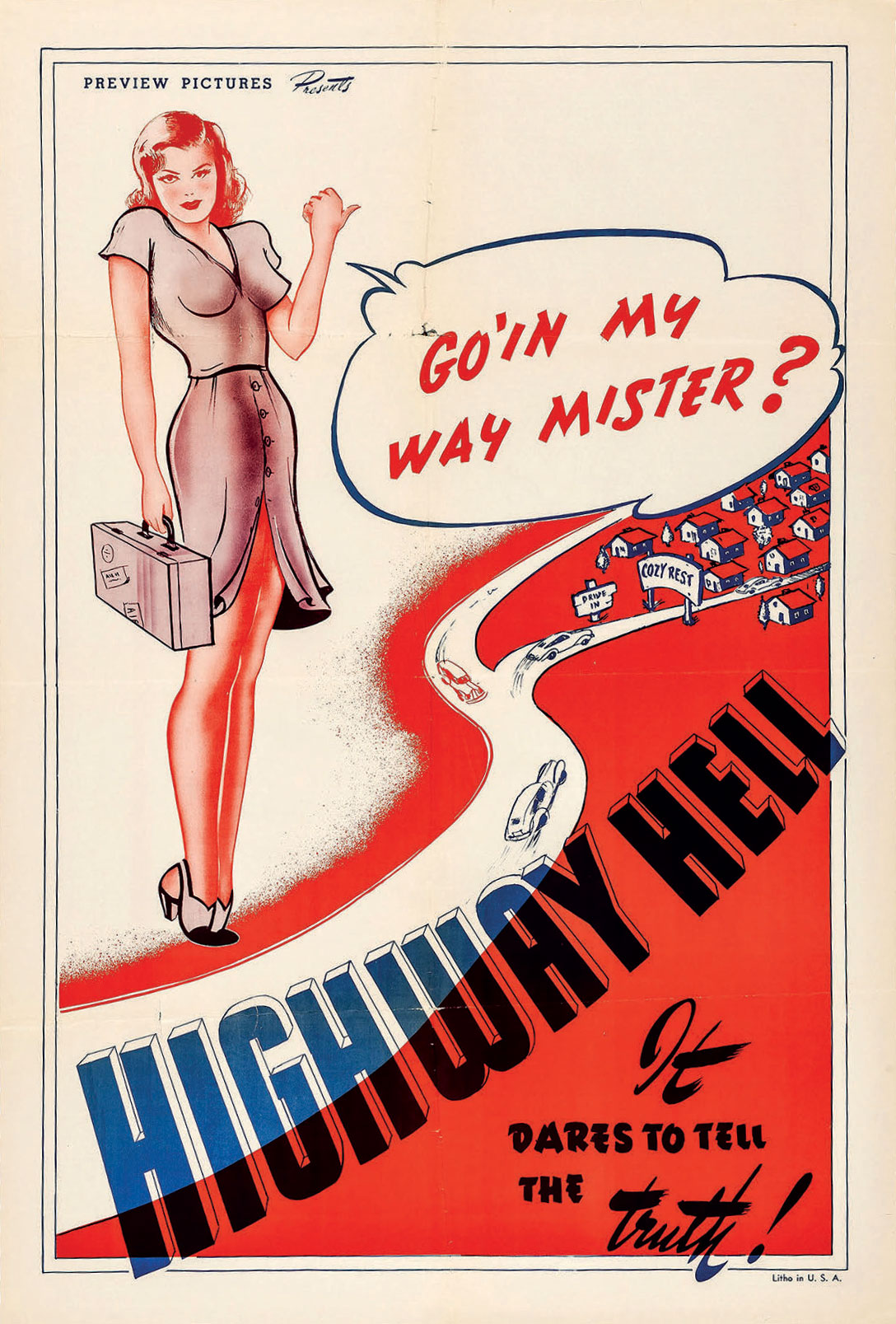The Road to Ruin
Exploitation Films and Roadside Culture
By Eric Schaefer

This poster for Highway Hell (1940), which appeared under several titles including Honky Tonk Girl, suggested the danger, and the allure, of highway travel in the years leading up to World War II.
Exploitation movies and the automobile came of age in the United States at about the same time. By 1920 Henry Ford was churning out around one million Model Ts on his Detroit assembly lines. Simultaneously in the motion picture business, the short, one-reel films that had supplied nickelodeon theaters and stoked the popularity of the medium were supplanted by feature-length narratives. These movies came about as the center of production shifted from New York and New Jersey to southern California with the major studios’ evolution. Exploitation movies emerged as an alternative to the mainstream Hollywood film industry and forged a bond with car culture, both thematically and in terms of distribution.
Today the term “exploitation movie” often suggests a low-budget movie that “exploits” a particular subject – usually something lurid or violent. But when the films emerged in the late 1910s, the term was far more precise, referring to pictures that did not hew to a familiar genre or have recognizable stars. Thus, they required additional “exploitation” beyond the usual posters in theaters or newspaper ads. That typically meant employing extra, over-the-top ballyhoo to pull in an audience. Ticket-buyers, who were already drawn to theaters by candy-colored neon and runner lights, might find their local bijou transformed with elaborate displays designed to “wow” the eye and rake dollars into the box office.
 Initially, exploitation films included sex hygiene films (made during and in the wake of World War I), religious pictures, and documentaries. But pushing into the 1920s, the label was primarily applied to low-budget independent movies made outside the Hollywood studio system that focused on material forbidden by state and local censors or the movie industry’s efforts to control content through self-regulation via the Production Code. They tended to be topical, and subjects included sex (in the form of sex education on childbirth and venereal diseases, nudism, and burlesque), vice, narcotics, atrocities, and so on.
Initially, exploitation films included sex hygiene films (made during and in the wake of World War I), religious pictures, and documentaries. But pushing into the 1920s, the label was primarily applied to low-budget independent movies made outside the Hollywood studio system that focused on material forbidden by state and local censors or the movie industry’s efforts to control content through self-regulation via the Production Code. They tended to be topical, and subjects included sex (in the form of sex education on childbirth and venereal diseases, nudism, and burlesque), vice, narcotics, atrocities, and so on.
About the Author: Eric Schaefer is Professor Emeritus in the Department of Visual and Media Arts at Emerson College in Boston, where he taught for almost 30 years. He is the author of “Bold! Daring! Shocking! True!”: A History of Exploitation Films, 1919-1959 (Duke University Press) and his essays in journals and books focus on low-budget and “adults only” filmmaking. He now resides in Albuquerque, New Mexico, five blocks south of Route 66, where he continues to research and write.
There’s more! To read the rest of this article, members are invited to log in. Not a member? We invite you to join. This article originally appeared in the SCA Journal, Spring 2021, Vol. 39, No. 1. The SCA Journal is a semi-annual publication and a member benefit of the Society for Commercial Archeology.
More Articles Join the SCA


